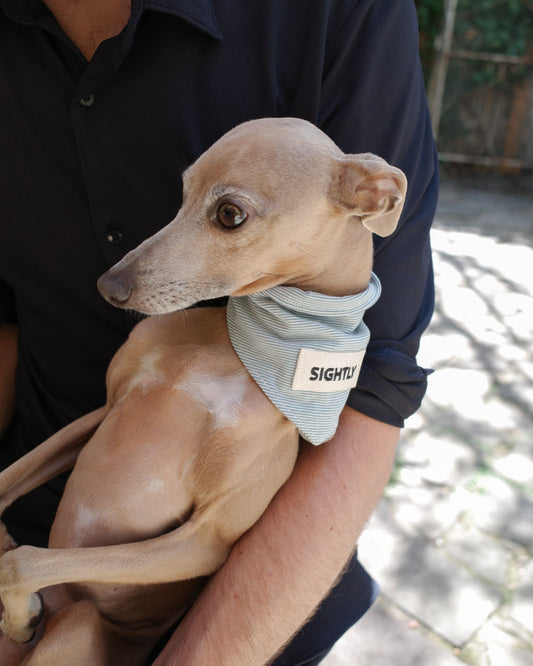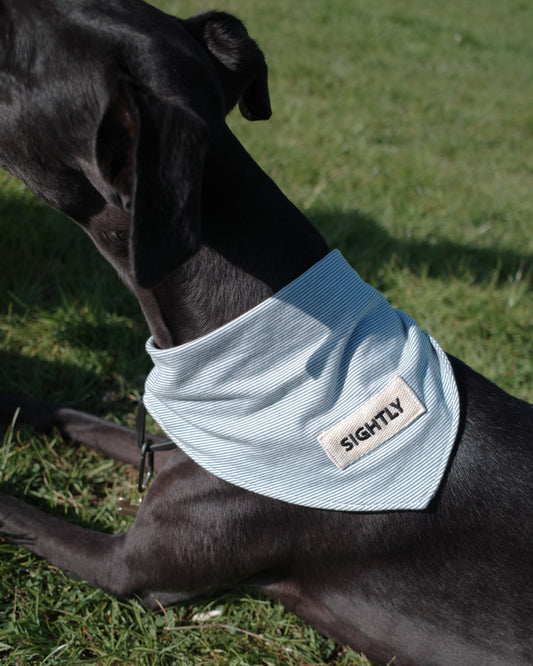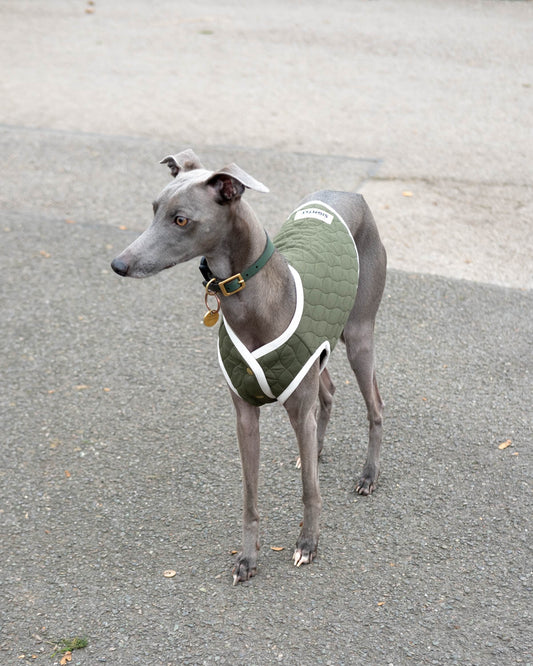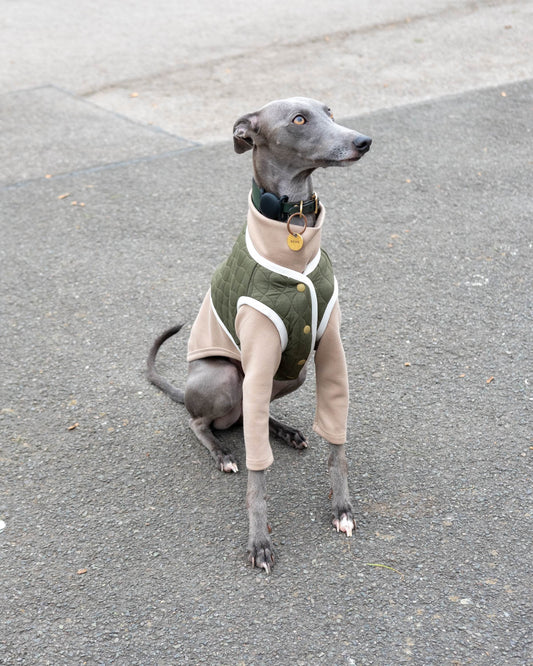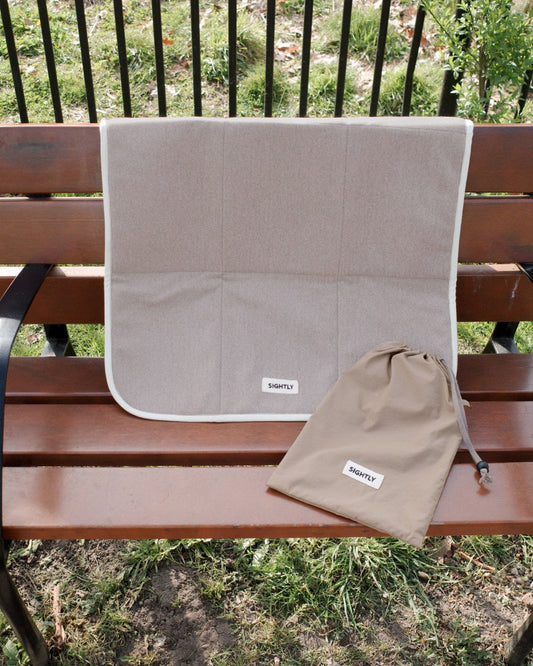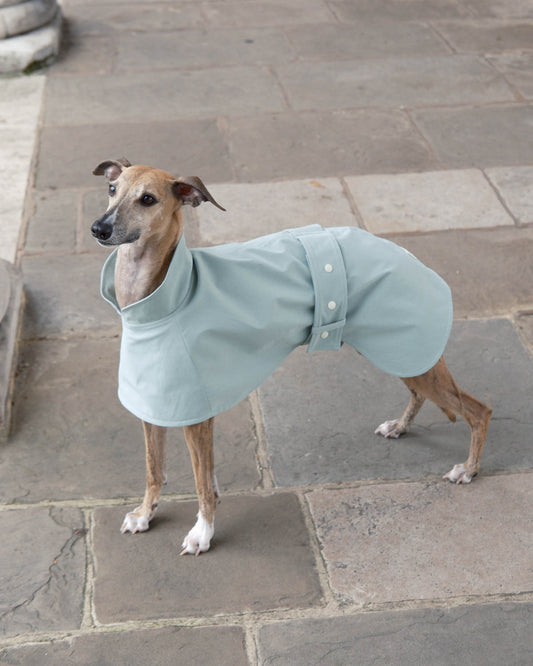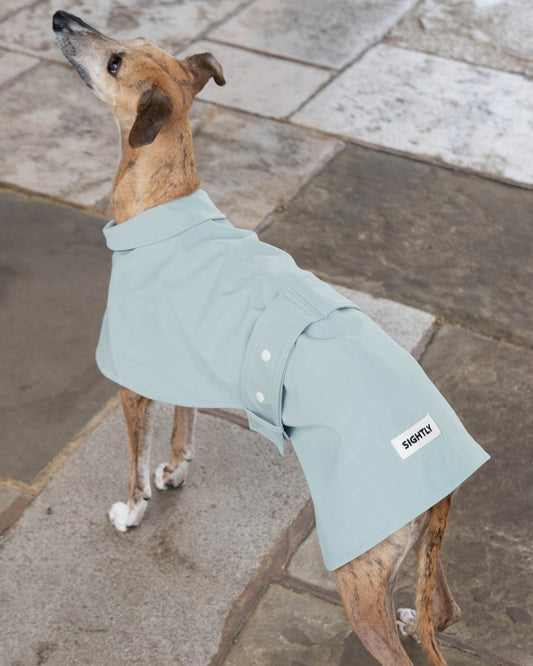Should Sighthounds Wear Clothes in Summer? 🐕
As someone who lives and works among sighthounds, I make a point of speaking regularly with fellow owners - sharing insights, swapping stories, and learning from each dog’s quirks. Not long ago, I caught up with an Italian Greyhound owner who mentioned a recurring summer challenge: his elegant little Iggy, with his delicate coat, had suffered sunburn in previous years. He was in search of something lightweight, protective, and considered.
It struck a chord. Our own Whippet, Onyx - glossy black and sensitive to heat - struggles in the sun too. Just a few minutes outside on a warm day, and he’s visibly more affected than other local dogs.
That conversation prompted me to look more closely at how summer weather affects sighthounds - and how thoughtful design might help. As the Summer in the UK threatens (though still hasn’t quite arrived), I wanted to share some useful tips and thoughts on the subject in case it might be of help.
Do Dogs Need Clothes in the Summer? Why Sighthounds Might Say Yes
Dogs don’t usually need clothing - but sighthounds are an exception. With their lean frames, minimal body fat, and fine coats, breeds like Whippets, Italian Greyhounds, and other sighthounds are more sensitive to temperature changes than most. That’s why it’s common to see them wrapped up in warm dog coats during winter walks.
But what about summer?
Hot weather naturally suggests fewer layers, not more. Most dogs move comfortably without clothing in mild conditions. Yet for sighthounds, summer now presents its own set of challenges. With UK summers growing hotter and more unpredictable - bringing heatwaves, high UV levels, and longer daylight hours - lightweight summer dog clothing isn’t just about looks. For some dogs, it’s a practical layer of protection from sun exposure, allergens, and outdoor irritants.
The Case for Summer Dogwear
Not every sighthound requires a summer wardrobe, but for many, it brings notable benefits. A UV-protective shirt or cooling vest offers more than polish—it provides comfort, safety, and peace of mind in specific scenarios.
1. Protection from Fleas and Ticks
As the weather warms up, we tend to take our dogs on longer adventures - into forests, meadows and countryside trails. These green spaces are full of beauty and excitement, but they also come with a rise in flea and tick risks for dogs. Ticks are especially common in rural areas like woodlands and grasslands. However, urban parks and gardens can also be hotspots for pests.
To help protect your dog, a lightweight and breathable summer layer can make a big difference. Acting as a barrier between your dog’s skin and unwanted insects, it can reduce the likelihood of bites, irritation, and ticks hitching a ride home.
2. Scratches from Tall Grass & Grass Seeds (Awns)
During summer and early autumn, dry fields full of tall grass or grass seeds (known as grass awns) can pose a hidden risk. These sharp seeds easily latch onto fur and can work their way into sensitive areas like paws, ears, armpits, or even eyes - leading to irritation, scratches, or more serious complications if left unnoticed.
A lightweight, breathable t-shirt or vest offers an extra layer of protection against surface scratches and invasive seeds, without restricting your dog’s natural movement.

3. Relief from Skin Allergies
Many Whippets and Greyhounds suffer from seasonal allergies caused by pollen, dust, or grass. These can lead to itching, rashes, or inflamed skin. A summer dog shirt can help reduce contact with these allergens, especially during high-pollen days, and make your dog’s outdoor time more comfortable.
4. Avoiding Overheating
Dogs with dark coats are especially prone to overheating, as their fur absorbs more sunlight. For breeds like black Whippets or dark-coated Lurchers, a cooling dog vest made from light-coloured, breathable fabric can reflect heat and help regulate body temperature. This is one of the simplest and most effective ways to practice hot weather dog care.
5. UV Protection for Dogs
Just like people, dogs can get sunburned - especially those with short or fine coats. Sighthounds often have exposed areas like the belly, ears, and inner thighs. UV rays don’t just come from the sun above; they also reflect off sand, pavements, and even grass. UV protection dog clothing can help minimise this risk. You can also pair this with dog friendly sunscreen for maximum protection.

Summer Safety Tips for Dogs
Above all, avoid walking your dog during the hottest hours of the day. Early mornings and late evenings are best, when the pavement is cool and the sun less intense. No outfit replaces common sense when it comes to heat safety.
When a trip to the coast, a city stroll or a countryside ramble is on the cards, the right summer kit - well-made, breathable, and beautifully constructed - can offer your sighthound the blend of comfort and elegance they deserve.
Sightly’s Summer Vest is on the way ☀️👕 Sign up to our newsletter to be the first to know when it drops! 💌

